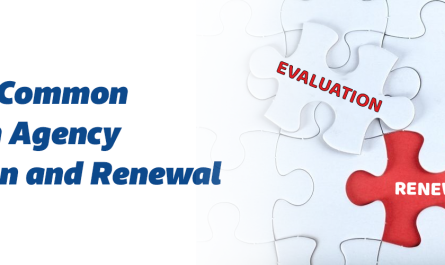Introduction
Collaboration is at the heart of any successful ad agency. With a mix of strategists, creatives, analysts, and account managers, the ability to work cohesively can make or break a campaign. But how can agencies create an environment where diverse skillsets blend seamlessly to deliver exceptional results?
Why Is This Topic Important?
A McKinsey study highlights that diverse teams are 35% more likely to outperform their peers. For a digital marketing agency in Mumbai or creative agencies in Bangalore, fostering collaboration isn’t just a nice-to-have—it’s a critical driver of innovation and client satisfaction. An integrated marketing agency thrives when every team member brings their unique expertise to the table in a harmonious way.
Strategies to Foster Collaboration Across Diverse Skillsets
1. Create a Culture of Respect and Understanding
Effective collaboration begins with mutual respect. Employees must value the unique contributions of their colleagues, whether they’re copywriters, designers, or account managers.
- Host cross-departmental meetups to help team members understand each other’s roles and challenges.
- Foster empathy by encouraging open discussions during project kick-offs.
2. Leverage the Power of Cross-Functional Teams
Cross-functional teams are a proven way to merge skillsets effectively. Create task forces where strategists, creatives, and analysts work together from the start to ensure alignment. This approach:
- Enhances creativity by bringing diverse perspectives.
- Reduces siloed decision-making, ensuring projects are cohesive.
3. Invest in Collaboration Tools
Technology plays a key role in bridging skill gaps. Ad agencies should implement tools like:
- Monday.com for project management.
- Miro for collaborative brainstorming sessions.
- Slack for real-time communication and updates.
These tools enable smoother workflows and ensure that all team members stay connected, whether in Mumbai, Bangalore, or remote locations.
4. Encourage Regular Feedback Loops
Frequent feedback fosters trust and allows for course correction during projects.
- Conduct weekly check-ins where all team members can share updates and insights.
- Use tools like Google Forms or 15Five to collect feedback anonymously, promoting honest communication.
5. Promote Knowledge Sharing
In an ad agency, staying updated on trends and best practices is essential. Encourage team members to:
- Host monthly knowledge-sharing sessions.
- Create shared resources like playbooks or internal blogs.
Overcoming Common Challenges in Collaboration
1. Skillset Silos
Different teams often work in isolation, leading to misaligned deliverables. Solution: Use project management platforms to centralize tasks and ensure transparency across departments.
2. Conflict Between Teams
Conflicts may arise when objectives clash, especially between creative and account teams. Solution: Encourage team-building exercises and ensure managers mediate issues constructively.
3. Differing Work Styles
Not everyone approaches work the same way. Solution: Incorporate flexible processes that allow for adaptability while maintaining project goals.
Best Practices for Collaborative Success
1. Define Shared Goals
Setting common objectives ensures all departments work towards the same outcomes. For example, if a campaign’s goal is brand awareness, the strategy, creative execution, and analytics should align seamlessly.
2. Celebrate Team Success
Recognizing collective achievements reinforces the importance of collaboration. Host team lunches, reward ceremonies, or simply give shoutouts during meetings.
3. Balance Individual and Team Contributions
While teamwork is essential, individual expertise must also be valued. Ensure that each team member feels their contributions are recognized.
4. Tailor Collaboration Models for Each Project
Every campaign has unique requirements. For an integrated marketing agency in Mumbai, a campaign might need a heavy reliance on data analytics, while a creative agency in Bangalore might prioritize design innovation. Customize collaboration models to fit the project’s needs.
The Role of Leadership in Fostering Collaboration
Strong leadership is vital in aligning diverse teams. Leaders should:
- Act as facilitators who break down barriers between departments.
- Provide clear directions to avoid confusion.
- Lead by example, showing respect for every skillset within the agency.
Conclusion
Fostering collaboration across diverse skillsets in an ad agency is both a challenge and an opportunity. By creating a culture of respect, utilizing the right tools, and embracing cross-functional teamwork, agencies can achieve exceptional outcomes. Whether you’re part of a digital marketing agency in Mumbai or a creative agency in Bangalore, collaboration will always be your competitive edge.
Does this interest you? Connect with us to see how we can help you build collaborative, high-performing teams for your ad agency!
10 Trending FAQs on Collaboration in Ad Agencies
1. Why is collaboration important in an ad agency?
Collaboration ensures seamless communication between creative, strategy, and account teams, leading to cohesive campaigns and innovative solutions. It fosters efficiency, creativity, and client satisfaction.
2. What tools are best for collaboration in creative agencies?
Popular tools include Slack for communication, Trello and Asana for project management, Google Workspace for document sharing, and Miro for brainstorming and design collaboration.
3. How can leadership improve teamwork across departments?
Leaders can encourage open communication, set clear goals, provide feedback, and foster a culture of mutual respect. Regular team meetings and cross-functional training also help.
4. What are common challenges in fostering collaboration?
Challenges include miscommunication, creative conflicts, siloed teams, and lack of clarity in roles. Addressing these with structured workflows and team-building activities helps.
5. How do digital marketing agencies handle cross-functional teamwork?
They use integrated project management tools, encourage open communication between teams, and implement agile workflows to ensure smooth coordination across functions.
6. What role does technology play in collaboration?
Technology streamlines processes, improves communication, enables remote work, and provides real-time project tracking, making collaboration more efficient and transparent.
7. How can an ad agency avoid conflicts between creative and account teams?
Setting clear expectations, encouraging open dialogue, and ensuring both teams understand client objectives can minimize conflicts and promote teamwork.
8. How do integrated marketing agencies manage remote collaborations?
They leverage video conferencing, cloud-based project management tools, and virtual brainstorming sessions to keep remote teams aligned and productive.
9. What are the benefits of celebrating team success?
Recognizing and rewarding achievements boosts morale, fosters motivation, and reinforces a culture of collaboration and appreciation.
10. How can skillset diversity drive innovation in ad agencies?
A mix of designers, strategists, analysts, and tech experts brings fresh perspectives, enabling out-of-the-box ideas and more dynamic marketing campaigns.
Some of the services that Clevertize provides are:
Creative Services, Performance & Digital Media Marketing, Visual Identity & Branding, Campaign Management & Analysis, UI/UX & Website design, Video creation, Media planning & buying, Chatbot & more.
If Return on Investment is critical for you, talk to Clevertize!
Reach out to us at saumya@clevertize.com!





